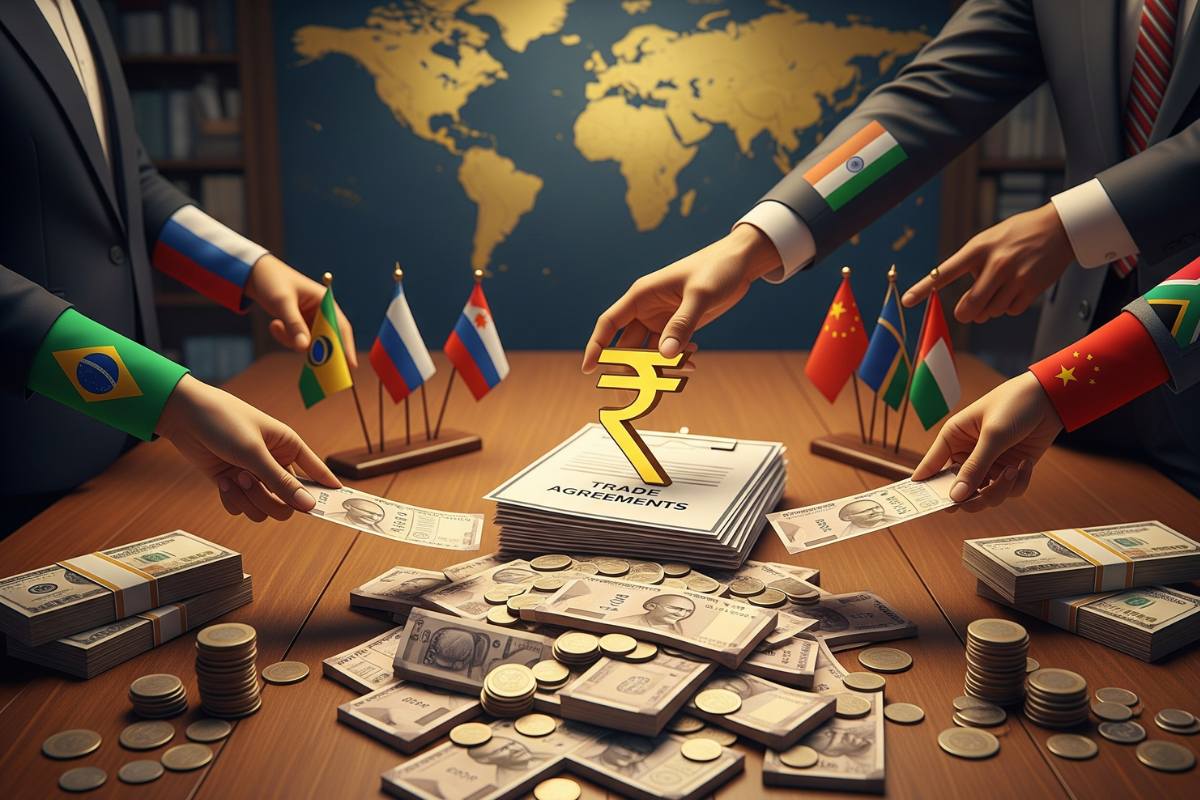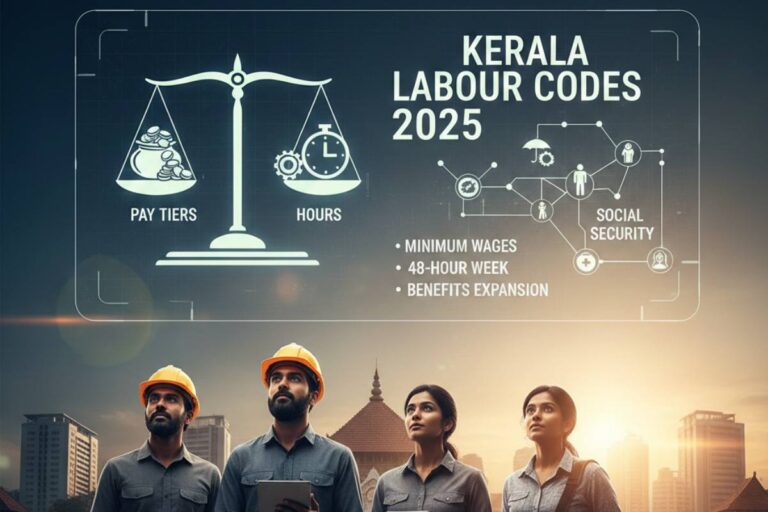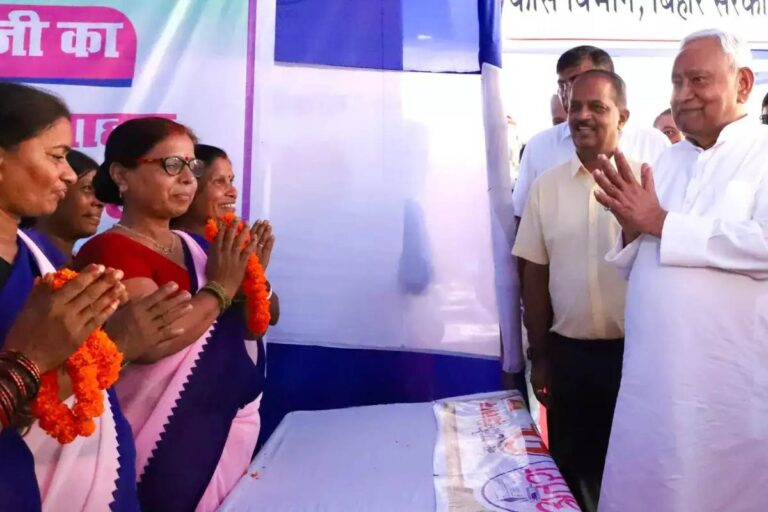In the grand, often impenetrable theater of global finance, a script rewrite of epic proportions is quietly underway. It’s a story that won’t make the splashiest of headlines, not yet, anyway, but its implications are profound, marking a potential turning point in the economic story of the 21st century. The news, which broke on August 25, 2025, is this: the powerful BRICS bloc of nations has, for the first time, formally agreed to settle trade among its members using the Indian Rupee (INR).
On the surface, it might sound like a dry, technical adjustment to international banking protocols. But make no mistake. This is far more than a simple currency swap. It’s a calculated, audacious, and deeply strategic move spearheaded by India, aimed squarely at challenging the decades-long, unquestioned supremacy of the U.S. dollar. This isn’t just about economics; it’s about sovereignty, influence, and the slow, deliberate construction of a new, multipolar world order.
For generations, the global economy has marched to the beat of a single drum: the American greenback. Whether it was oil flowing from the Middle East, electronics from Asia, or agricultural goods from South America, the dollar was the universal language of commerce. That long-standing reality is now facing its most significant challenge to date. Here’s the kicker: this isn’t a theoretical debate anymore. It’s happening now. A coalition of nations representing nearly half the world’s population is building a financial highway that bypasses Washington entirely, and India has just handed them the map.
The Dawn of a New Financial Architecture
So, what does this “landmark decision” actually entail? Peeling back the layers of financial jargon reveals a plan that is both elegant and disruptive. The core of the agreement is to allow the ten nations that now form the expanded BRICS bloc to conduct their import and export business directly in Indian rupees, completely circumventing the need for U.S. dollar conversions.
This represents a massive diplomatic and economic victory for India, the culmination of a long-held vision to internationalize its currency. The goal has always been to elevate the rupee from a regional player to a currency of global significance, and this BRICS agreement is the single most important step yet toward that ambition. For India, this is about more than just boosting trade; it’s about securing a seat at the head table of global finance, a place where it can not only participate in the system but actively shape its rules.
The benefits, at least on paper, are crystal clear. By trading in a common, non-dollar currency, BRICS nations can insulate themselves from the notorious volatility of the foreign exchange markets. They can shield their economies from the ripple effects of American monetary policy and, crucially, from the ever-present threat of economic sanctions. It’s a declaration of financial independence, a collective move to de-risk their economies and reclaim a measure of strategic autonomy that has long been surrendered to the dollar-denominated system. And for the businesses on the ground, the traders, the manufacturers, the importers, the promise is one of simplicity and savings. No more costly currency conversions, no more hedging against exchange rate swings. Just cleaner, faster, and cheaper trade.
The BRICS Behemoth: An Economic Force Reawakened
To truly appreciate the gravity of this move, one has to understand what BRICS has become. It’s no longer just a clever acronym coined by an economist. It has evolved into a geopolitical and economic force of staggering proportions.
The intellectual roots of the bloc can be traced back to the post-Cold War era and the vision of figures such as former Russian Foreign Minister Yevgeny Primakov. He foresaw a “multipolar” world, one where the rise of other major powers would balance the unipolar dominance of the United States. This idea of a more distributed global power structure was the seed from which everything else grew.
Before BRICS itself came into being, the groundwork was laid by two smaller, pioneering forums:
- RIC (Russia, India, China): This trilateral group was a powerhouse in its own right, focusing on aligning the strategic interests of the three largest and most powerful nations in Asia.
- IBSA (India, Brazil, South Africa): This unique forum brought together three major democracies from three different continents, all committed to championing the cause of the “Global South” and strengthening South-South cooperation.
These earlier groupings were the proving grounds. They demonstrated that emerging economies could collaborate effectively outside the traditional, Western-led institutional framework. BRICS was the natural, and much more powerful, evolution of this concept, uniting the original five members, Brazil, Russia, India, China, and South Africa, into a single, formidable coalition.
But the story didn’t end there. In a move that sent shockwaves through the diplomatic world, the bloc recently underwent a historic expansion. It threw open its doors to five new members: Egypt, Ethiopia, Iran, the United Arab Emirates (UAE), and, notably, Indonesia, one of Southeast Asia’s largest economies.
The numbers behind this new ten-member BRICS are almost difficult to comprehend. Together, they now represent:
- Nearly 45% of the entire global population.
- A significant and rapidly growing share of the world’s total economic output (GDP).
- A colossal slice of international trade, encompassing both raw materials and manufactured goods.
Funny thing is, for years, many commentators in the West dismissed BRICS as little more than a “talk shop,” a disparate group of countries with little in common besides a shared sense of grievance. But with this kind of collective economic weight, that narrative is becoming impossible to sustain. When this group makes a unified decision, especially one that strikes at the heart of the global financial system, the world has no choice but to sit up and take notice. This is no longer just a bloc; it’s the foundation of a parallel economic ecosystem.
The Geopolitical Game: Why Now?
The timing of this historic decision is anything but random. It is a direct response to the turbulent geopolitical landscape of the 2020s, a world defined by great power competition, economic friction, and the increasing use of finance as a weapon.
Let’s be honest, the primary catalyst has been the unprecedented wave of Western sanctions imposed on Russia. These measures, which effectively cut Russia off from large swathes of the dollar-based global financial system, served as a stark wake-up call for nations around the world. It demonstrated, in the clearest possible terms, just how vulnerable any country could be if it fell out of favor with Washington. For nations like China and even India, which have their own complex and sometimes fraught relationships with the West, the lesson was clear: dependence on the dollar is a strategic liability.
China, for its part, has been on a multi-decade quest to challenge American financial hegemony and promote the international use of its own currency, the yuan. This BRICS initiative, while centered on the rupee, aligns perfectly with Beijing’s long-term strategic objectives. Any move that weakens the dollar’s grip is, from China’s perspective, a step in the right direction.
For India, however, the calculus is more nuanced and, if I’m honest, quite brilliant. By spearheading the rupee trade settlement plan, India accomplishes several key goals simultaneously.
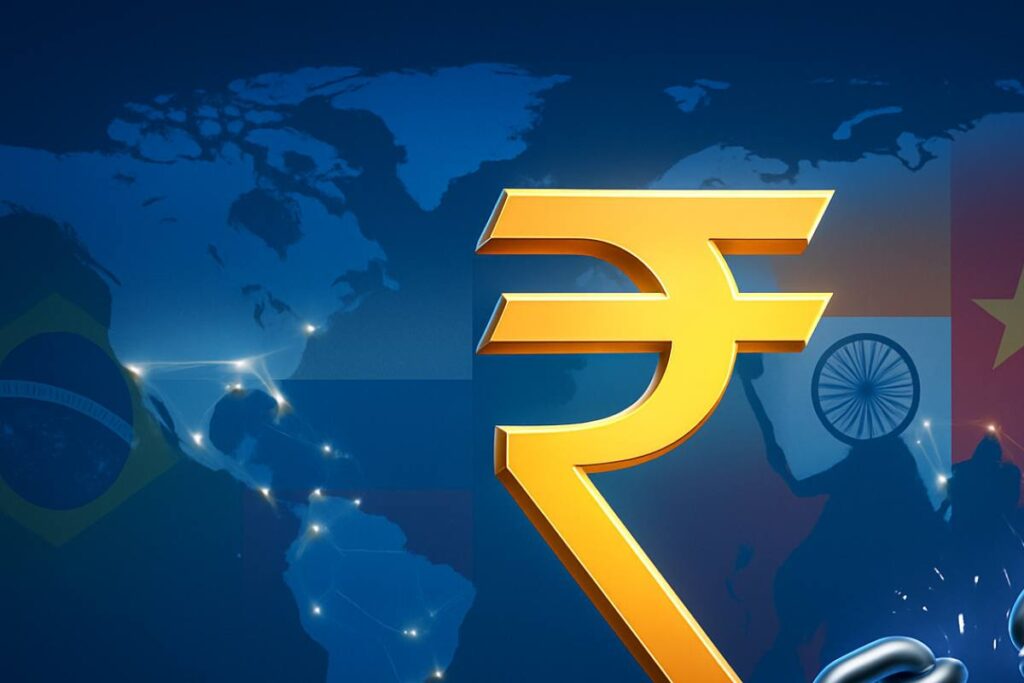
- Asserting Leadership: It firmly establishes India as a leader and an agenda-setter within the BRICS framework, preventing the bloc from becoming overly dominated by China.
- Strategic Balancing: It provides India with a powerful tool for what diplomats call “strategic autonomy.” It allows New Delhi to deepen its economic ties with crucial partners like Russia (a major supplier of energy and defense equipment) and the UAE (a key trade and investment hub) on its own terms, without needing a green light from the West.
- A Dual-Track Approach: This move doesn’t mean India is turning its back on the West. Far from it. It allows India to maintain its robust and growing partnerships with the U.S. and Europe while simultaneously building out an alternative, non-Western economic network. It’s a sophisticated balancing act, a way to have a foot in both camps without being beholden to either.
In essence, the decision to embrace the rupee is where economics and geopolitics collide. It’s a defensive move to mitigate risk, but it’s also an offensive play to project influence and reshape the global order into one that better reflects the economic realities of the 21st century.
From the Trading Floor to the Dinner Table: The Real-World Ripple Effects
It’s easy to get lost in the high-level talk of geopolitics and currency reserves, but what does a decision like this actually mean for ordinary people? Believe it or not, the impact could be surprisingly direct, touching everyone from small business owners to the average family.
For the business community, especially those involved in international trade, the benefits are immediate and tangible. Imagine a small-scale textile exporter in Tiruppur, Tamil Nadu, who wants to sell their goods to a department store in Brazil. Under the old system, the transaction was a tangled mess. The Brazilian buyer would have to convert their currency, the real, into U.S. dollars. That dollar payment would travel across the world, and the Indian exporter would then have to convert it back into rupees. Each step of that journey involved fees, commissions, and the ever-present risk that a sudden fluctuation in the dollar-rupee exchange rate could wipe out their entire profit margin.
Now, picture the new reality. With rupee settlement, that entire convoluted process disappears. The Brazilian buyer can pay directly in rupees, and the Indian seller receives rupees. It’s faster, it’s cheaper, and it eliminates a huge amount of risk and uncertainty. For that small business owner, this isn’t just an abstract policy change; it’s a lifeline. It means less paperwork, healthier cash flow, and the ability to compete on a more level playing field.
And the ripples don’t stop there. Think about India’s massive import bill. The country is one of the world’s largest importers of crude oil and fertilizers, much of which comes from BRICS partners like Russia and the UAE. If India can pay for these essential commodities in its own currency, it will significantly reduce its demand for U.S. dollars. This can strengthen the rupee over time and, here’s the kicker, potentially lead to lower import costs. Those savings could, in theory, be passed on to the consumer, resulting in more stable prices at the gas station or more affordable food for millions of Indian families.
Finally, there’s the undeniable element of national pride. For decades, Indians have grown up in a world where the U.S. dollar was the undisputed king, the ultimate symbol of economic power. To see their own currency, the rupee, begin to gain acceptance on the global stage is a powerful psychological boost. It’s a tangible sign of India’s rising stature in the world, a source of collective confidence in the nation’s economic future.
The Road Ahead: A Marathon, Not a Sprint
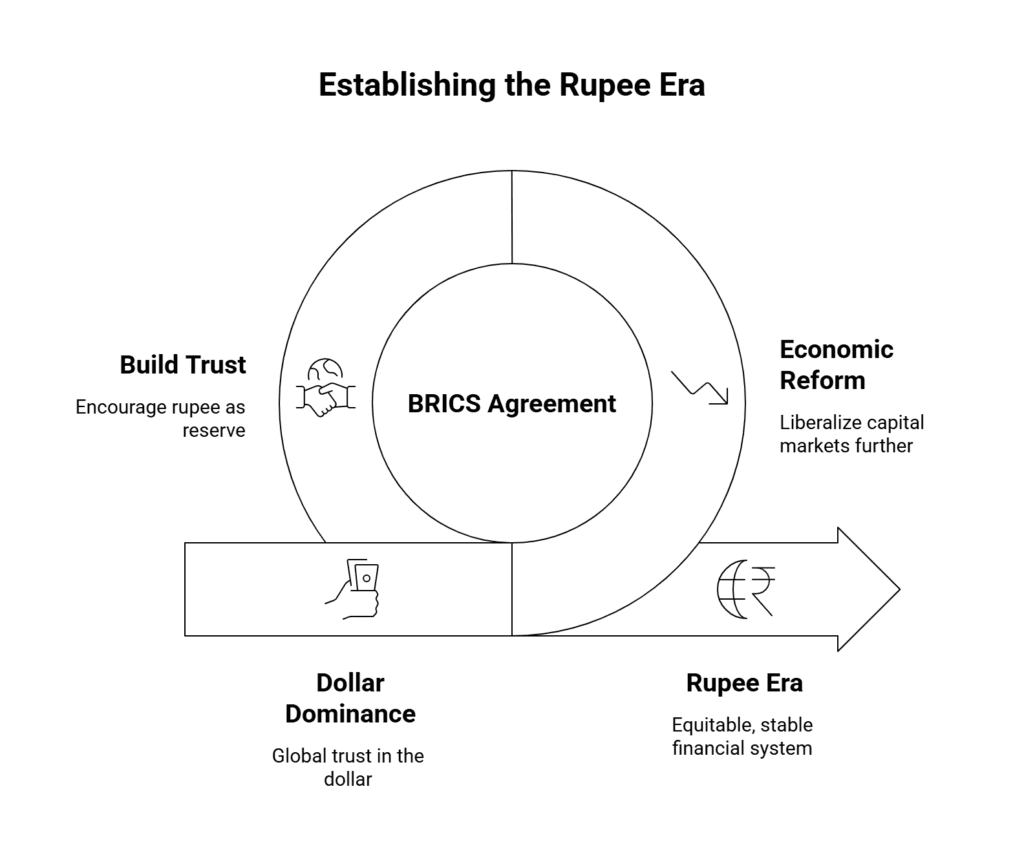
Now, before we declare the dawn of the “Rupee era,” a healthy dose of realism is in order. Dethroning the U.S. dollar is a monumental task, and despite this historic agreement, the path ahead for the rupee is long and fraught with challenges.
The dollar’s dominance is not an accident of history. It is built on the bedrock of the world’s largest and most dynamic economy, its deepest and most liquid financial markets, and the unwavering trust of global investors who see it as the ultimate safe-haven asset. It’s a self-perpetuating system; people use the dollar because everyone else uses the dollar. Breaking that cycle is incredibly difficult.
The Indian rupee, for all its recent gains, still faces significant structural hurdles. It is not yet fully convertible, meaning the Indian government still maintains certain controls on the flow of capital in and out of the country. For a currency to be truly global, it needs to be freely and easily exchanged without restrictions. Furthermore, India’s financial markets, while growing, still lack the sheer depth and liquidity of their American or European counterparts.
Even the architects of this policy are candid about the timeline. They know this is a gradual process, one that will play out over years, if not decades. This BRICS agreement is a hugely significant first step, a powerful statement of intent. But it is just that, a first step.
What comes next will be crucial. India will need to continue its path of economic reform, further liberalize its capital markets, and build trust among its trading partners not just to use the rupee for transactions, but to hold it as a reserve asset.
The decision by the BRICS nations to settle trade in Indian rupees is not the final chapter in the story of de-dollarization. But it is, without a doubt, the most exciting chapter yet. It’s a story of ambition, of shifting power dynamics, and of a group of nations determined to build a financial system that is more equitable, more stable, and more reflective of the world we live in today. The dollar’s reign is not over, but for the first time in a very long time, a legitimate contender has stepped into the ring. The world is watching.








